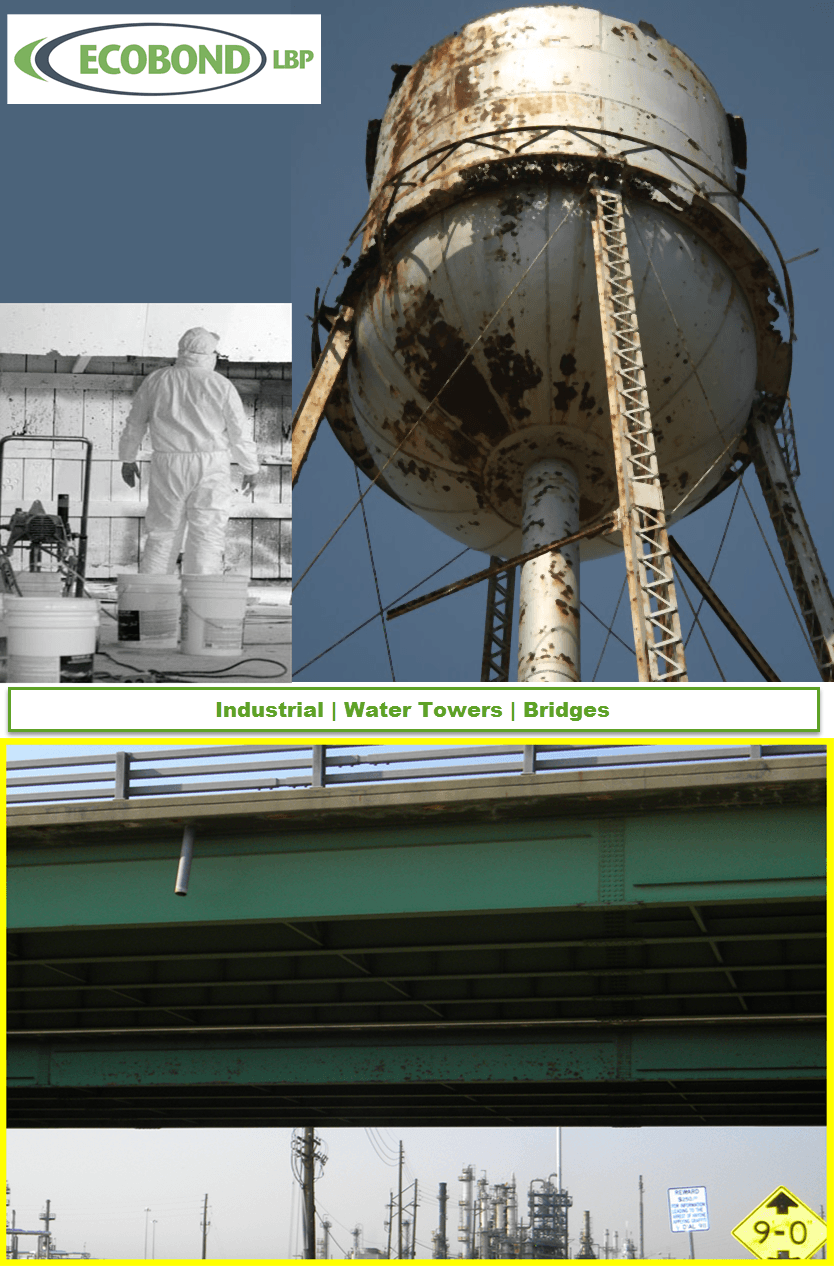 Critics seem always to focus on the past and not about the positive acts taken to resolve a problem. Lead paint has suffered under this thinking and little has issued forth from critics about lead paint remediation and how many of the challenges of removing have led to success.
Critics seem always to focus on the past and not about the positive acts taken to resolve a problem. Lead paint has suffered under this thinking and little has issued forth from critics about lead paint remediation and how many of the challenges of removing have led to success.
At one time, lead paint covered everything from houses to bridges, much has occurred to reverse that mistake as the impact of lead has entered into the mindset of America, much as cancer and other dangerous diseases and substances. An entire industry has emerged to address the problems. Tying economics to the problem's resolution often proves the best way to meet most challenges society faces.
In the case of bridges, a symbol long thought of as connecting people and places, the problem of removing lead paint from its surface presents a special problem. Bridges span waterways, valleys, and other difficult topographical features, making it easier for travelers and shippers to move from one location to another. Though they provide convenience in one regard, they are difficult to build, paint, and maintain for all the obvious reasons.
The Mackinac Bridge is a good example of what it takes to properly and safely remove lead paint from a bridge. Unlike other great structures, bridges are generally made of a metal. In this case, it requires not just stripping the paint off down to the metal, but it also requires an enclosure to prevent airborne lead from spreading and to ensure that all lead-based paint removed makes it to an approved disposal site.
Involved in the removal is, of course, human beings. These workers will do their job suspended high off the river below. Possessing the requisite, training safety workers began on the bridge along with tackling the lead paint problem and preventing it from becoming airborne. Working in tight places, high up, clearly indicates that workers are at risk and rescue training is the key to protect these workers.
But safety goes beyond just the rescue aspect, it also involves assuring the workers do not inhale the lead dust that will spread when they start sanding the paint off the metal structure. Masks and uniforms have become part of the toolbox of preventive care. These important tools, used by remediation enterprises, protect workers from the harmful lead particulates that become airborne as the lead paint is removed.
Still, further and extreme measures include removing the lead-paint covered steel altogether. This is what contractors decided to do for the Kennedy Mill bridge. Rather than build an encasing structure to prevent airborne lead from spreading during the paint removal phase, they chose to remove all the metal painted with lead-based paint.
When the measure taken appears long, drawn out, or even excessive, it is not fair to assume that contractors are overdoing the job. In the case of bridges, not just humans assume a risk in immediate terms, but they may suffer exposure to lead dust, as is true for the public. All these measures indicate, instead, that the lessons of the power and danger of lead-paint are known -- connecting today with the promise of a better tomorrow.
While lead paint is a problem that mostly affected people decades ago, there are still plenty of bridges in the nation with this dangerous paint. It is important to get this paint removed as soon as possible to keep a town safe from serious health problems. Most people know that lead paint is a health risk in homes and buildings, few may realize the problems it can pose on bridges.
Failure to remove lead paint in this situation can be very serious. For example, lead paint could flake off and fall into the river. If this river is used as a water source, or if people swim in it, they could suffer from the dangers of lead exposure. When this happens, they could suffer from health problems such as:
- Confusion and agitation
- Decreased mental acuity
- Problems with focusing
- Lowered IQ
- Lead poisoning (which can be deadly)
That's why managing this problem quickly is so important. However, it also needs to be approached in a careful and measured way to avoid any accidents that could make the situation even worse.
The Process Can Be Complex
Getting rid of lead paint on a bridge is a complex process that requires a careful approach. First of all, the paint must be treated, not merely painted over. In this way, the bridge is rendered free of the danger from lead paint. Some types of specialty paint can also minimize airborne lead spread. In this way, you can protect yourself and your employees from serious lead poisoning potential. ECOBOND® - LEAD DEFENDER® is the nation’s leader in developing and distributing products that improve the protection of human health and safety from the hazards of lead in the home, workplace, and the environment. With over 15 years in patented and proven success, the ECOBOND® - LEAD DEFENDER® family of products have been extensively used in successfully treating lead hazards in over 11,000,000 tons of material while serving over 100,000 customers in the United States and Internationally.
To learn more visit www.EcobondPaint.com
